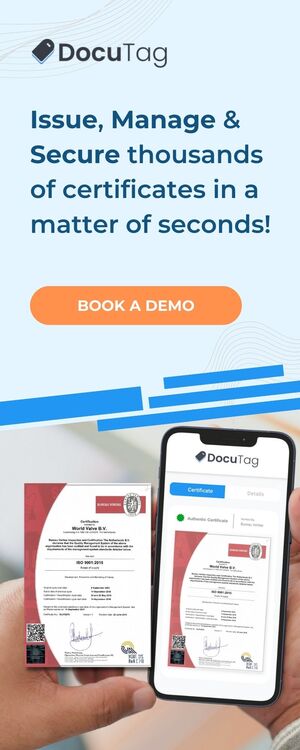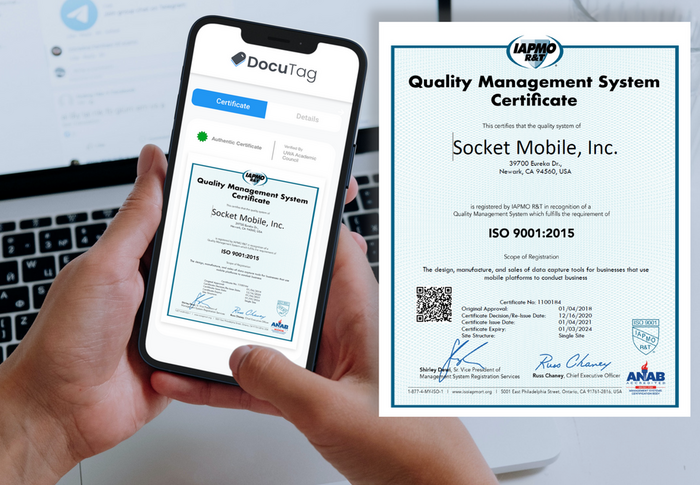Jump to specific parts:
What are digital badges?
Digital badges are digital representations of achievement, skill, competency, or knowledge that an individual has acquired. They are typically issued by organizations, such as educational institutions, professional associations, or employers, to recognize an individual’s achievement in a specific area.
Digital badges are designed to be shared and displayed on digital platforms, such as social media profiles or personal websites, resumes or portfolios, to showcase an individual’s skills and achievements.
How do digital badges work?
Digital badges are typically issued using a digital badging platform, a software platform that allows organizations to design, issue, and manage digital badges. The platform typically provides Tools for creating badges, Defining the criteria for earning a badge, Issuing and managing the badges metadata.
When an individual earns a digital badge, they typically receive an email notification with a link to the badge; This can be stored in a digital wallet, such as Mozilla’s Open Badges, where it can be accessed and shared. The badge contains metadata, such as the criteria for earning the badge, the issuer and the date it was issued. This metadata provides additional context for the badge and helps ensure others recognize and value it.
Summary of how Digital Badges works:
| Step | Explanation |
|---|---|
| 1. Badge creation | A badge creator designs and creates a digital badge using a badge creation tool. The badge includes a visual image and metadata that describes the criteria for earning the badge. |
| 2. Badge issuance | When a learner meets the criteria for earning a badge, the badge is issued to them. This can be done manually by the badge creator or automatically by a badge issuing system. |
| 3. Badge display | The learner can display their badge on their online profile or website. The badge typically includes a visual image, metadata, and a verification link. |
| 4. Badge verification | Potential employers or other stakeholders can verify the authenticity of the badge by clicking on the verification link, which provides access to the badge metadata and evidence of the learner’s skills and achievements. |
The difference between Digital Badges and Certificates:
Digital badges and certificates are both used to recognize an individual’s achievements, but they have several key differences. Here are some examples to illustrate the differences:
Scope: Digital badges are designed to recognize a wide range of skills and knowledge, including those that traditional educational institutions may not recognize. For example, a digital badge could be earned for completing a specific task or project, participating in a workshop or training program, or volunteering in a community project. In contrast, certificates are typically issued by educational institutions or formal training programs to recognize the completion of a specific course or program of study.
Granularity: Digital badges are more granular than certificates, meaning they can recognize specific skills or achievements rather than a general study area. For example, a digital badge could be earned to demonstrate proficiency in a specific software program, complete a project, or master a particular skill. In contrast, certificates typically recognize a broader study area, such as completing a degree program or a specific course.
Verification: Digital badges are designed to be easily verifiable, typically through the badge’s metadata. This metadata includes information about the issuer of the badge, the criteria for earning the badge, and the date it was issued. This information makes it easy for others to verify the authenticity and value of the badge. In contrast, certificates may have a different verification level, mainly if smaller or less well-known educational institutions issue them.
Portability: Digital badges are designed to be easily shared and displayed on digital platforms, such as social media profiles or personal websites. This makes it easy for individuals to showcase their skills and achievements to potential employers or other organizations. In contrast, certificates may be more challenging to share. They may require physical copies or transcripts to be sent to potential employers or other organizations.
Switching to Digital Credentials

DocuTag is a Certificate Management System will help you:
- Automate the way you issue credentials: Our Certificate Generator allows you to issue all the certificates at once by simply uploading a CSV file. This will eventually help you cut down on both time & administrative costs that are usually incurred by the certificate production.
- Ensure a safer verification process: All your Blockchain credentials come with a QR code and a secure URL link that provide access to your digital credentials. The learner can directly choose who they want to share their certificates with. Any 3rd party can use this link to verify whether the information on the certificate is authentic.
- Centralize data: Once all your certificates are digitized and stored on the Blockchain. DocuTag grants you access to all your previously-issued certificates in one dashboard. This way, you can keep track of all credentials in one place.
A transition to digital credentials can help you mitigate risks related to the loss of physical degrees and fake certificates.
Want to find out more about DocuTag? Check out our website.






